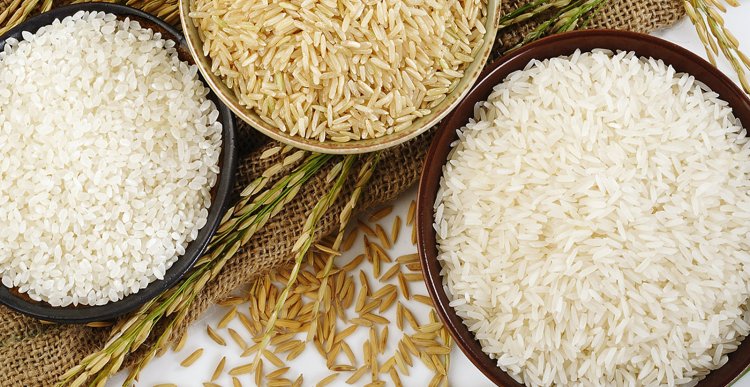Tags
Trends 2025: Pressured by Large Harvest And End to India Export Ban Rice Prices Likely to Come Down
Rice exports from other exporters like Pakistan are projected to decline by 12.3% year over year, according to estimates from S&P Global Commodity Insights analysts, due to India’s re-entry into the market. Prices have already been facing significant pressure from Indian pricing for both non-basmati and basmati varieties.
Team RuralVoice

India’s decision to lift its export ban on white rice and scrap the export duty on parboiled rice, combined with a bumper kharif harvest, is expected to flood the global rice market and exert downward pressure on prices in other producing countries in the first quarter. S&P Global has said this in its latest commodity report.
Quoting an Indian exporter, it says, “The Indian market will remain fundamentally bearish up to the first quarter of 2025. Pakistan will dominate white rice outflows till January/February 2025. However, after that it’s India’s game. For parboiled, India will likely perform well in terms of export amid bumper supply.”
Rice exports from other exporters like Pakistan are projected to decline by 12.3% year over year, according to estimates from S&P Global Commodity Insights analysts, due to India’s re-entry into the market. Prices have already been facing significant pressure from Indian pricing for both non-basmati and basmati varieties.
But a trader from Singapore feels that local demand is expected to pick up next year in India, likely stabilising the market. This stabilization occurs despite the new crop’s bumper supply, as the Minimum Support Price (MSP), set by the government to ensure fair compensation for farmers, is expected to keep paddy prices bullish.
Myanmar’s white rice exports are expected to fall in 2025 due to lower monsoon crop productivity. In Thailand, the outlook for rice reflects mixed opinions amid these developments. Thai rice export prices are expected to decline in March and April due to the arrival of the new white rice crop and subdued demand.
The Vietnamese rice export market is expected to see constrained supply until March, with significant arrivals from the winter/spring harvest in April. Demand for fragrant rice should remain strong, particularly from the Philippines and Africa, while white rice prices may soften due to increased supply starting in February 2025 and competition from India and Thailand.
With US President-elect Donald Trump taking office in January, the US rice market is preparing for changes, including a 10% tariff on Chinese imports and a 25% tariff on products from Mexico and Canada, which may pressure US rice prices. However, the anticipated rise in Indian rice exports could introduce cheaper varieties, potentially stabilizing or lowering US prices if American producers face competition.
Council of Mills of South America anticipates a bumper crop in 2025, with production projected at 16.66 million mt, a 17.5% increase from 2024. Cultivated areas are expected to rise to 2.39 million hectares, supported by improved yields of 6.97 mt/ha. This abundant supply will likely lead to lower prices, stimulating domestic consumption and enhancing export opportunities.
Demand trends
On the demand front, S&P Commodity Insights analysts project a drop in rice imports for Indonesia and the Philippines due to El Nino, although government support may boost local production. In West Africa, oversupply and low prices from India’s bumper harvest may also impact demand in South Africa and Thailand.
Analysts estimate that Indonesia’s rice imports are expected to fall by 44.5% year over year. The government has depended on BULOG for imports due to an extended El Nino, resulting in significant import levels and a stock-to-use ratio of 14% by the close of 2023-24. To lower imports to below 2 million mt by 2025-26, the ministry intends to enhance domestic production.
Similarly, Commodity Insights analysts forecast that the Philippines’ imports are expected to fall by 4.7% year over year. Since the 2022-23 period, the El Nino event has led to considerable import levels and a high stock-to-use ratio. Government support is expected to enhance local production and decrease import reliance.
In one of the biggest importing regions, West Africa, traders said the market is likely to have a bearish outlook due to an oversupply situation. Importers based in Benin and Abidjan said that “2025 will be a challenging year for West African destinations, with prices expected to stay low at least until mid-2025.”
This oversupply is further influenced by the bumper harvest in India, which is expected to lead to price decreases at the origin. A South African importer noted that this reduction in prices will be reflected in destination markets, potentially increasing demand in South Africa and ultimately exerting pressure on the Thai market.
https://eng.ruralvoice.in/international/trends-2025-pressured-by-large-harvest-and-end-to-india-export-ban-rice-prices-likely-to-come-down.htmlPublished Date: December 15, 2024






